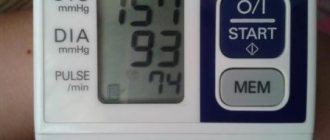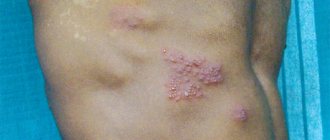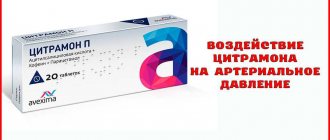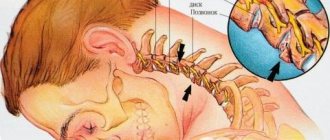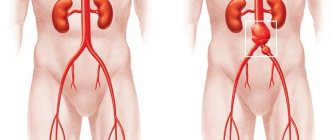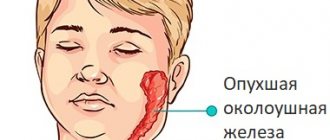Ivan Drozdov 05/05/2018 36 Comments
Nature has taken excellent care of the safety of the human brain. She enclosed him in a hard skull case to prevent possible injury. In addition, brain tissue is always in suspension, constantly washed by cerebrospinal fluid, or cerebrospinal fluid. It plays the role of a kind of shock-absorbing pillow, and also protects the brain from shock. But not only. Liquor carries oxygen and nutrients to brain cells. And then it removes waste products through the venous outflow.
Liquor continuously circulates, washing the spinal cord and brain. In a healthy person, it is completely renewed up to seven times a day. Its constant volume, as a rule, reaches 1 liter. Cerebrospinal fluid originates from the arterial plexuses, taking away their nutrition for the “gray” matter, and leaves through the venous pathways, taking with it waste waste.
If suddenly for some reason the venous outflow is disrupted, the circulation of cerebrospinal fluid becomes difficult. It begins to accumulate and puts pressure on the soft tissues of the brain, eventually leading to their deformation and atrophy. This condition causes severe headaches. They usually occur in the early morning or at night, when the overall blood flow in the body is slow and stagnation of cerebrospinal fluid forms more easily.
In addition, the value of intracranial pressure is influenced by the density of brain tissue, which largely depends on the influx of arterial blood and venous outflow. ICP also depends on the presence of intracellular and osmotic pressure of extracellular fluid.
Signs and symptoms of intracranial pressure
Many of us, as a rule, do not attach much importance to mild ailments, manifested by minor headaches, short-term and mild dizziness, and blurred vision. But all these signs are characteristic of fluctuations in intracranial pressure and may indicate severe structural damage to the brain.
Symptoms of increased intracranial pressure
How does increased ICP feel? In most cases, severe stale head syndrome occurs, bursting, pressing pain appears. This type of headache appears as a result of irritation of receptors in the dura mater of the brain and intracranial vessels. The pressure comes from the inside onto the eyeballs and ears. The feeling is like when an airplane lands.
The patient also experiences constant fatigue and is in a state of increased nervousness. Literally everything irritates him: bright lights, loud sounds, people around him. Nausea appears, accompanied by vomiting. But at the same time, the gag reflex does not bring the patient the expected relief. Visual impairment and hearing impairment occur.
Intracranial pressure increase is a dangerous phenomenon and can cause a lot of harm to human health. It requires the attention and help of good specialists in the field of neurology.
Reduced intracranial pressure
If the cerebrospinal fluid level drops, the ICP decreases. Primary intracranial hypotension is a fairly rare phenomenon. Most often, the disease occurs due to loss of cerebrospinal fluid as a result of therapeutic and diagnostic interventions. This condition can also be caused by an overdose of dehydrating drugs, as well as arterial hypotension.
The most characteristic symptom is compressive pain in the occipital and parietal regions. It decreases when the jugular veins are pressed or when lying down with the head down. Painful sensations are accompanied by dizziness, attacks of nausea, and tachycardia. The patient has pale skin, arterial hypotension, lethargy, and lethargy. With a sharp decrease in ICP, disorders of consciousness may appear, from mild forms to coma.
Decreased intracranial pressure due to a lack of cerebrospinal fluid can lead to brain injury. After all, cerebrospinal fluid plays the role of a kind of shock-absorbing cushion, protecting the “gray matter” from unwanted shocks. Consequently, intracranial hypotension increases the risk of damage to the blood vessels of the head with further hemorrhage in the brain, as well as displacement of brain tissue or damage to its structure.
Thus, a normal level of ICP is an indispensable condition for active brain activity.
Symptoms
Let's consider the main symptoms of increased intracranial pressure in adults that affect a person’s well-being:
- One of the first symptoms of increased intracranial pressure is a constant headache, which begins with waking up and intensifies at night or in the evening. Discomfort caused by increased intracranial pressure may increase during coughing or other sudden head movements.
- Along with constant headache, nausea (without vomiting) is considered a characteristic symptom.
- A sharp change in mental state is another signal that can be caused by intracranial hypertension (may manifest itself as excessive irritability, slow speed of decision-making, and other noticeable behavioral disorders). In rare cases (if not properly treated), these disorders can lead to pathological stupor and even coma.
- Periodic surges in pressure, frequent fainting is possible.
- Pain in the eyeballs, double vision and bruises under the eyes may occur.
- Excessive sweating.
Often the listed symptoms worsen when the atmospheric pressure changes or during a sudden change in weather. The headache may get worse when lying down. This is due to impaired circulation of cerebrospinal fluid.
The manifestation of one or more symptoms is a reason to contact a specialist. Do not self-medicate under any circumstances, as taking the wrong medications can significantly worsen the condition.
Causes of intracranial pressure
This pathology does not occur very often. But no age category is immune from it. Men are much less susceptible to it than women and children.
Provoking factors include:
- changes in hormonal balance in women (during menopause, menstruation, pregnancy);
- the presence of certain infections in the body;
- long-term use of medications (psychotropic drugs, glucocorticosteroids and others);
- brain tumor;
- head injuries;
- cerebral edema;
- dysfunction of the kidneys and adrenal glands (water-salt imbalance);
- CNS disorders (with meningoencephalitis, hydrocephalus, cerebral hemorrhage);
- congenital anomalies.
Sometimes ICP surges are a physiological norm. But this can only be judged after a number of necessary diagnostic measures have been carried out.
Signs of increased ICP in children
In children, high intracranial pressure is manifested by symptoms such as:
- Headache. But this does not always happen, and we must take into account that children can simulate, that is, simply copy the poor health of adults. Therefore, it makes sense to observe carefully before drawing any conclusions. If there really is a headache, it occurs mainly in the morning and is not associated with emotional experiences, then you should take the child to the pediatrician for examination.
- Hyperactivity. The child becomes restless and disobedient.
- Emotional disorders: irritability, tearfulness, excessive touchiness.
If there are sudden and unfounded changes in the child’s psyche and behavior, the cause of this condition should be identified and a visit to the pediatrician should be made to rule out or confirm intracranial hypertension.
How is intracranial pressure measured?
Arterial pressure should be distinguished from intracranial pressure. In the first case, it is enough to use a tonometer, mechanical or electronic, and you can do this yourself. ICP is measured by medical personnel in the hospital. This procedure is quite traumatic, and it is allowed mainly in seriously ill patients in order to timely prevent a threat to their life.
There are several ways to measure intracranial pressure in the neurological rehabilitation department:
- Subdural method. Used rarely and in particularly severe cases. A special instrument is used to make a small hole in the bone tissue of the skull. A subdural sensor is placed there, with which measurements are taken.
- Epidural method. An epidural sensor is placed in the burr hole between the skull and the meninges.
- Through an intraventricular catheter. This is the most modern and reliable way to determine ICP. A catheter is inserted into the cranial cavity through an opening, which is able to reach the lateral ventricle of the brain. Thanks to it, it is possible not only to measure intracranial pressure, but also to pump out excess cerebrospinal fluid.
ICP can be approximately determined using MRI or electroencephalography, when indicators of bioelectrical activity of the brain are assessed. Their fluctuations may indicate ICP disorders. In addition, an ophthalmologist, with a thorough analysis of the fundus, can also detect intracranial hypertension.
It is not possible to determine the level of pressure at home. Therefore, you should carefully monitor your condition, and if characteristic signs appear repeatedly, consult a doctor.
How to lower blood pressure with medications
In adults, in normal health, the pressure inside the cranium ranges from 5 to 15 mm Hg. Art. An increase in its values to 35 mmHg is considered critical. Art., which leads to loss of consciousness and threatens the death of brain tissue. In this case, drug treatment is carried out as an emergency measure to reduce intracranial pressure and prevent irreversible changes.
This therapy is temporary and is designed to relieve dangerous symptoms. Typically, intracranial hypertension is treated comprehensively depending on the causes of the pathology. For example, surgery is performed to remove tumors, aneurysms, or excess cerebrospinal fluid. In the treatment of diseases of infectious etiology, antibacterial agents are used.
Review of drugs
To treat symptoms of intracranial pressure with tablets, you must first consult a doctor. After examining and studying the tests, he will prescribe the appropriate medications. The first choice drug for adults is diuretic tablets for intracranial pressure, which quite effectively stabilize the patient’s condition. Let's look at which drugs are used most often.
"Diakarb"
This is a saluretic with a diuresis effect. The tablets are taken orally for two days. The dosage is prescribed by a doctor, usually 0.5-1 tablet of 0.25 g twice a day is recommended to relieve swelling. The maximum amount of the drug to achieve a significant effect should not exceed 0.75 g per day.
The medicine is well absorbed and acts for 6-12 hours. Its use is contraindicated in such cases as:
- functional disorders of the liver and kidneys;
- diabetes;
- hypersensitivity to the constituent components;
- the patient has hypokalemia or uremia.
"Diacarb" is prohibited for use by children under three years of age, pregnant and breastfeeding women.
"Furosemide"
This is a fast-acting diuretic. It is effective in case of edema and circulatory disorders, as well as arterial hypertension. The medicine can be used in combination with other antihypertensive drugs.
Furosemide is available in the form of 40 mg tablets. The usual dosage is one tablet per day, preferably in the morning. To achieve maximum effect, the dose can be increased to 160 mg in divided doses, that is, 2 times a day. For children, the drug is prescribed at a rate of 1-2 mg/kg body weight
Manufacturers pay attention to the following contraindications:
- pregnancy;
- lactation period;
- hypokalemia disease;
- renal failure;
- hepatic coma;
- problems with urination.
"Glivenol"
Tablets such as Glivenol help reduce intracranial pressure. This remedy has a significant positive effect on the expansion of peripheral vessels and promotes venous outflow. Dosage form – capsules of 400 mg of active ingredient. The dosage is prescribed by the doctor depending on the severity of the patient's condition. The average therapeutic dose is one capsule twice a day.
"Prednisolone"
In especially severe cases, they resort to glucocorticosteroids, such as Prednisolone. This is a synthetic hormonal drug. The course of treatment and dosage are prescribed individually.
The initial dose for acute conditions is usually 0.2-0.3 g per day. The drug is taken taking into account the schedule of the natural daily production of hormones by the adrenal cortex. Typically, the highest dose of medication is prescribed in the morning and the lowest dose in the evening.
To avoid complicated consequences, a person with increased intracranial pressure should be monitored in the intensive care unit. Self-medication in such a situation is strictly contraindicated. Be healthy!
How to reduce intracranial pressure
Various methods can be used to relieve symptoms of increased intracranial pressure. The tactics and treatment regimen are determined by the attending physician. This may include:
- conservative therapy . Typically, diuretics and a low-salt diet are prescribed;
- surgical correction . If drug treatment is ineffective, excess cerebrospinal fluid is removed using a catheter or a structural tumor is removed;
- folk remedies . It is recommended to take renal, diuretic teas that improve the outflow of fluid from the body, soothing and vasodilating teas that help relieve vascular spasm and improve cerebral circulation;
- alternative methods of treatment : massage, special gymnastic exercises. Such methods are effective only with pressure caused by obstructed venous outflow due to compression of the veins by spasmed neck muscles or processes of the cervical vertebrae.
If the change in ICP is situational in nature, it is natural and cannot be treated. Such pressure surges are observed after certain types of physical activity, due to changes in weather and other reasons.
Method of measurement and norm of ICP in adults
normal intracranial pressure in adults is 10-15 mm Hg
In itself, intracranial pressure is not a disease, but a pathological syndrome that manifests itself during the development of various pathological processes in the body. Intracranial pressure, like blood pressure, is present in every person, but it is very difficult to determine it, compared to arterial pressure.
Increase rates vary significantly, depending on the individual patient and the condition in which he is located. Head tilting forward, sneezing and straining, physical activity and stress, screaming and crying - increase the pressure inside the skull significantly.
Today, the only reliable way to measure intracranial pressure is a ventricular puncture, a collection of cerebrospinal fluid (CSF) located in the ventricular cavities of the brain. This surgical procedure is used for diagnostics in a hospital setting, as it requires a highly qualified doctor and complete sterility.
Other methods, no matter how high-tech they are, provide only indirect confirmation of changes in ICP. In clinics, to check intracranial pressure, a method of examining the fundus of the eye is used, based on the characteristic changes of which a preliminary diagnosis is made, although the data obtained using this method are only indirect confirmation of the presence of pathology.
- The norm for ICP in healthy people is mercury readings ranging from 10 to 15 mm.
- A condition exceeding 25 mm is considered dangerous.
- Level close to 35 mm. – called critical, threatening loss of consciousness and death of brain cells.
Recognizing pathological signs in time means preserving your health, and sometimes life itself.
Treatment of intracranial hypertension: methods and means
When suffering from headaches, many of us are accustomed to using painkillers exclusively.
At the same time, forgetting that without eliminating the root cause of pain, it is impossible to get rid of them forever. The direction of treatment will directly depend on which disease is the root cause of the painful symptoms. Both conservative and surgical treatment are used, as well as knowledge and experience of traditional medicine. In any case, it is necessary to reduce blood pressure only under the supervision of a specialist. The main principle is the simultaneous treatment of the underlying disease and reduction of ICP in various ways and means. In addition to medications, the patient is prescribed diet therapy, proper drinking regimen, and lifestyle changes.
The following methods of treating the disease are used:
- diuretics (Veroshpiron, Mannitol, Furosemide, Diacarb, etc.) remove excess fluid from the body, normalize the content of cerebrospinal fluid and improve its absorption;
- venotonic drugs that regulate venous outflow (Phlebodia, Troxivasin, Eufilin, etc.);
- all drugs containing caffeine tone the veins and promote the outflow of venous blood;
- preparations containing potassium (Asparkam) improve electrolyte balance and tissue metabolism, resulting in improved brain nutrition. Prescribed for cerebral edema caused by traumatic brain injury or stroke;
- corticosteroids (Dexamethasone, Prednisolone) are taken for brain tumors and meningitis. Neutralizes swelling caused by intoxication or allergies;
- myotropic antispasmodics (No-shpa, Papaverine, Caventon, Cinnarizine, etc.) eliminate spasm of cerebral vessels, thereby improving blood flow and nutrition of the brain;
- antibacterial agents are used for neuroinfections;
- nootropic drugs (Nootropil, Pantogam, Ginkgo biloba, etc.) significantly improve brain function, positively affecting mental processes and memory mechanisms;
- sedatives neutralize the effects of stress, act as a vasodilator, relieve irritability, improve the quality of sleep and mental activity;
- vitamin complexes are prescribed to improve metabolism and general strengthening of the body;
- homeopathic remedies (Notta, Neurohel);
- The surgical method is used if a brain tumor has formed and puts pressure on the surrounding intracranial structures. In case of hydrocephalus, excess cerebrospinal fluid is drained through intracranial penetration using a silicone catheter;
- physiotherapy: electrophoresis with aminophylline (introduction of aminophylline into the collar area improves brain nutrition and normalizes lymph absorption), magnet on the collar area (magnetic fields normalize pressure, relieve swelling), massage, physical therapy, acupuncture (relieves vascular spasm, improves metabolism and work nervous system), circular shower (stimulates the functioning of the vascular system, improves metabolism);
- alternative treatment is used only if ICP has increased due to excess weight, constant stress, impaired venous outflow or osteochondrosis of the cervicothoracic spine.
Some of these techniques alleviate the symptomatic manifestations of intracranial hypertension, while others eliminate its root cause. If left untreated, the disease will become chronic and can lead to serious complications, such as stroke.
List of medications for normalizing blood pressure in adults
To eliminate signs of the disease with medications, patients are prescribed useful injectable or tablet medications that lower ICP. Doctors also advise taking diuretics, which will remove excess fluid from the body.
Before starting therapy, it is recommended that you familiarize yourself with the list of effective tablets for the treatment of intracranial hypertension.
Diuretics
These diuretics are often used to relieve symptoms of high or low blood pressure. Regular use of diuretics helps remove accumulated fluid from the body and reduce ICP. The most effective diuretics include Diacarb, Lasix, Hypothiazide and Asparkam.
Vasoactive drugs
To improve blood flow to the brain, it is recommended to use vasoactive agents that reduce ICP and dilate vascular walls. The most effective drug from this group is considered to be magnesia, which quickly eliminates the symptoms of hypertension and stabilizes the heartbeat.
Nootropics
Nootropic medications are prescribed to relieve headaches and improve mental activity. Effective drugs include:
- "Phenotropil" - normalizes blood circulation and helps cope with emotional and physical stress.
- "Piracetam" - promotes the utilization of glucose and improves metabolism.
- "Nootropil" - activates brain function during prolonged mental stress.
Preparations with amino acids
Medicines of this type are used to improve the production of vitamins with hormones and proteins. Doctors also recommend using medications with amino acids to reduce the load on the brain and eliminate headaches, which often appear with high ICP.
Vitamin complexes
Vitamins are always necessary for the body, and therefore, during therapy, doctors advise drinking special vitamin complexes. Such medicinal drugs are considered very useful, as they help strengthen the immune system and improve metabolism.
Painkillers
To reduce pain caused by increased ICP, it is recommended to take painkillers. Among the effective drugs from this group are Nimesil. This remedy differs from other similar drugs in its antipyretic and anti-inflammatory properties. Before taking Nimesil, it is better to consult your doctor to determine the optimal dosage.
Relieving symptoms of intracranial pressure at home
Running will help normalize blood pressure.
Results will appear faster if accompanied by proper breathing. Gymnastic exercises, visiting the pool, daily walking, and any other increase in activity during the day help well. It is necessary to get rid of excess weight, if any. This will help normalize blood pressure. You should adhere to healthy principles in your diet: eat less salt and more fresh natural food: vegetables, herbs, fruits. It will be useful to include ginger in your daily diet, which will strengthen blood vessels, normalize cerebral circulation, and increase immunity.
To avoid surges in ICP at night, you should place a thin and fairly dense pillow under your head. Thanks to this, the cervical arteries will not be pinched during sleep, and blood circulation to the brain will not be impaired. In addition, at home, to relieve symptoms of ICP, use a heating pad in the lumbar region, do self-massage of the head and collar area.
It is necessary to stop smoking. Nicotine causes vascular spasms and disrupts liquor dynamics. Reduce alcohol consumption as it can cause swelling of the brain. Overheating in a bath or under hot sunlight should be avoided. Limit your time spent watching TV and computers to one hour a day. Follow a daily routine and alternate mental and physical activity. Regularly conduct sanatorium treatment specializing in diseases of the circulatory system.
Prevention
Prevention of the development of intracranial hypertension includes:
- timely and active treatment of neuroinfectious diseases;
- prevention of traumatic brain injuries;
- timely correction of disorders of liquorodynamics and blood circulation;
- rational management of pregnancy and childbirth;
- avoiding mental and physical stress;
- adherence to daily routine;
- rejection of bad habits.
The increase in intracranial pressure should not be underestimated. Painkillers and antispasmodics are not able to relieve you of the disease. A thorough medical diagnosis and competent treatment is required, which is prescribed depending on the causes of the pathology. You should not rely on traditional medicine. Only highly professional medical care can make your life long and fulfilling.
Hydrocephalus of the brain in children Concussion Increased intraocular pressure: symptoms, causes and treatment Hemorrhagic stroke of the brain Hypertension Atherosclerosis of cerebral vessels
Intracranial pressure: treatment with folk remedies
Due to the fact that constant pressure is placed on the brain, serious disturbances in its functions occur. A person’s intellectual capabilities, energy level, and quality of life decrease. Therefore, it is necessary to use various means and methods to normalize the level of ICP, including using traditional medicine methods.
The most reliable folk remedies for the treatment of intracranial hypertension are considered to be a mixture of honey and lemon juice with water, infusions of rose hips, plantain, hawthorn, valerian, motherwort, and alcoholic tincture of clover. They drink kidney teas that stimulate the functioning of the kidneys and adrenal glands, as well as herbal decoctions with a mild diuretic effect (horsetail, knotweed and others).
An effective preventive measure is peppermint oil, taken in the amount of 10 drops per glass of water twice a day after meals. It effectively affects the condition of blood vessels and maintains their tone.
When ICP increases, mustard baths help a lot. One or two tablespoons of mustard powder are diluted in a bowl of warm water and the feet are immersed there for 10-20 minutes. This simple procedure will reduce the filling of the blood vessels in the brain and help reduce intracranial pressure.
For self-massage of the head, take flower pollen and mix it with honey (2:1). The mixture is kept in a dark place for three days, and only after that it is suitable for consumption. You should gradually rub the prepared product into your head and back of your neck. Then wrap everything in a towel, and repeat this daily for a month.
A mixture of alcohol tinctures will improve blood circulation in the brain tissue and help reduce cranial pressure. It is necessary to mix tinctures of the following medicinal plants:
- eucalyptus (1/4 part);
- mint (1/4 part);
- valerian (1 part);
- motherwort (1 part);
- hawthorn (1 part).
The mixture is placed in a darkened glass container, a little clove is added and left to infuse. After two weeks, start taking 25 drops in a tablespoon of water three times a day. The prepared remedy eliminates venous spasm and improves the outflow of cerebrospinal fluid.
Unconventional methods will help temporarily relieve pain caused by intracranial hypertension, but will not eliminate the underlying disease. Therefore, you should not resort to self-medication. Folk remedies are only a component of complex therapy prescribed by a doctor.
Non-drug therapy
Drug therapy will be ineffective in the long term unless lifestyle adjustments are made. It is necessary to review the diet and exclude foods that affect blood pressure. These are hot, spicy, pickled, salty dishes, tonic drinks, and alcohol. The amount of salt consumed should be significantly reduced. It is recommended to completely stop smoking, as it destabilizes the vascular walls.
Mild sedatives help reduce intracranial pressure
It is necessary to pay attention to the daily routine. First of all, you should ensure a good night's sleep - try to go to bed and wake up at the same time. Also, do not overwork yourself either mentally or physically. Regular walks in the fresh air, physical therapy (exercises), head massage, and water procedures are recommended.
Symptoms of ICP
Normally, cranial pressure in adults should be 3-15 mmHg. Art., in childhood – 3-7 mm Hg. Art. With increased ICP, the pathology is expressed by a number of signs:
- intense headaches of a bursting and pressing nature, which increase with coughing, sneezing and head movement;
- heaviness in the head;
- visual impairment (decreased pupillary response to light, diplopia);
- nausea, in advanced cases - vomiting;
- excessive sweating and chills;
- noticeable muscle weakness;
- swelling of the eyelids and cheekbones;
- increased fatigue, irritability;
- shortness of breath, lack of air;
- formation of dark circles under the eyes.
In what cases should you consult a doctor? High intracranial pressure is not considered an independent disease. It is a consequence of injuries and various diseases. However, it is dangerous to ignore it; you should immediately seek help from a medical facility.
The accumulation of cerebrospinal fluid causes pressure on the brain body. Because of this, mechanical damage and dysfunction of the brain can occur. Sometimes this leads to irreversible consequences and even death. It is necessary to visit a doctor at the first signs of pathology.
Please note: Such diseases are treated by a neurologist. He conducts the necessary research, diagnoses the disease and selects therapeutic methods.
The following methods are chosen for diagnosis:
- Ultrasound of the brain (echoencephalography);
- fundus examination;
- MRI;
- CT;
- Doppler ultrasound;
- REG.
Using these methods, the presence of increased pressure inside the head is determined. Its measurement is carried out by inserting a special needle into the skull, to which a pressure gauge is connected. After identifying the pathology, the specialist searches for the cause of its occurrence. Intracranial pressure is almost impossible to eliminate, only to reduce it with medications and lifestyle changes.
Features in children and adolescents
In children, the main cause of increased ICP is hydrocephalus (excessive accumulation of cerebrospinal fluid in the intracranial cavity, which is manifested by an expansion of the cerebrospinal fluid evacuation pathways, cerebrospinal fluid hypertension and a decrease in brain tissue mass).
The main causes of hydrocephalus in newborns:
- Congenital defects in the development of the central nervous system.
- Previous intrauterine infections.
- Birth trauma, extreme prematurity.
- Congenital tumors and malformations, benign cysts.
In older children - a history of head injury or infectious and inflammatory diseases of the brain, tumors. In 20% of young patients, the cause of hydrocephalus cannot be determined.
If the ICP increased even before the fusion of the skull bones, the infant’s brain part of the head progressively grows, the bone sutures diverge, the skin becomes thinner and the veins on the scalp swell, the anterior crown bulges. When percussed on the bones of the skull, a sound is heard reminiscent of the crackling of a broken ceramic vessel. The baby is developmentally delayed, and apathy, drowsiness, and loss of appetite progress over time.
Conservative treatment of increased ICP in adolescents is acceptable only in the early stages with compensated hypertension without neurological disorders. The drug of choice is “Acetazolamide” (“Diacarb”), and in an age-related dose in combination with “Asparkam” or “Panangin”.
In all other cases, surgical intervention is indicated:
- installation of a liquor shunt system (ventriculoperitoneal or atrial);
- neuroendoscopic perforation of the third ventricle floor;
- Ventriculocisternostomy.
The choice of surgical method depends on the patient’s age, ICP level, degree of compensation, and the condition of the tissues at the implantation site.
Diagnosis of the disease
Cerebral hypertension is a phenomenon that cannot be diagnosed without additional examination. For this purpose, invasive or non-invasive methods are used, with which one can assess the degree of cerebrospinal fluid pressure on soft tissues and the functional state of the brain. For adult patients, the following diagnostic methods may be informative:
- blood analysis;
- computed tomography (CT) is a method that allows you to visualize signs of intracranial hypertension;
- MRI;
- study of cerebrospinal fluid pressure by lumbar puncture.
After birth, examinations are required to detect hypertension in infants. At this age, it is still possible to perform diagnostics using ultrasound. Normal intracranial (intracranial) pressure ranges from 10 to 17 mm. Hg Art.
Possible complications with ICP
If treatment is not started in time, intracranial hypertension progresses and can lead to dangerous complications. These include:
- stroke;
- mental pathologies associated with brain dysfunction;
- impaired motor coordination due to cerebrospinal fluid pressure on the cerebellum;
- disruptions in the functioning of the cardiovascular system, arrhythmias;
- the appearance of epileptic seizures;
- blurred vision.
Cerebral edema is a dangerous condition that affects the functioning of all organ systems. It especially affects the development of children at a young age, but adult patients also suffer from manifestations of this pathology. Symptoms of the development of edema are a violation of motor and visual functions, coordination of movements, attention and memory. Children experience a delay in the formation of reflexes and a general lag in growth and development.
Diagnostics
Diagnosis of increased intracranial pressure, as well as assessment of the severity of the syndrome, present certain difficulties. This is due, first of all, to the fact that the value of intracranial pressure is not a constant value and is subject to pronounced fluctuations during the day. Normally it is 70–220 mm of water column.
Echoencephalography provides approximate data, but they should only be assessed in combination with clinical picture data.
X-rays of the skull in patients with long-term elevated intracranial pressure reveal a characteristic sign – “finger impressions”.
One of the types of diagnostics of increased intracranial pressure is echoencephalography
It is possible to reliably measure intracranial pressure by performing a puncture of the ventricles and inserting a special electronic sensor into them. This is an invasive procedure that requires the creation of a burr hole in the skull, and therefore it is performed only in a neurosurgical hospital.
To identify the underlying pathology that led to increased intracranial pressure, perform:
- Doppler ultrasound of the blood vessels of the head;
- neurosonography (in children of the first year of life, until the large fontanelle closes);
- magnetic resonance, computer (multispiral computed) tomography;
- laboratory examination (clinical, biochemical, cytological) of cerebrospinal fluid;
- stereotactic biopsy of brain tumors followed by histological and cytological examination of the resulting tissue.
If increased intracranial pressure is suspected, the patient should be consulted by an ophthalmologist with a mandatory examination of the fundus. A characteristic change in this condition is papilledema.
Among women
In general, the symptoms of intracranial pressure in women are classic. Sometimes they may be accompanied by severe swelling and soreness of the limbs. It has been noticed that girls have a higher pain threshold, but are much more sensitive to minor pain, so the disease in them can occur in a more acute form. Often among the complaints of the fairer sex you can find:
- high blood pressure;
- redness of the eyeball;
- pressing pain in the neck;
- increased heart rate;
- tachycardia;
- increased salivation;
- severe headache.
Beta blockers for blood pressure tablets
Specific tablets for intracranial pressure are called beta blockers. Judging by the reviews, this group, which can be easily identified by its medical name that ends in “lol,” is effective. If you want to take the drug once a day, ask your neurologist to prescribe a long-acting drug (for example, Corinfar or Tenorika). This will be especially interesting for older people and will help them not to miss taking the drug. There are the following selective beta blockers for blood pressure:
- Atenolol;
- Bisoprolol;
- Talinolol;
- Carvedilol;
- Nebivolol;
- Betaxolol;
- Metoprolol.
In what cases will immediate medical treatment be required?
Immediate medical assistance will be needed in case of injury and damage to the skull, as well as in case of stunning. This can also include severe bleeding, which usually occurs with any hematoma, where a provoking surge in intracranial pressure may appear.
- Severe attack in the form of pain in the head,
- frequent fainting,
- pseudomeningitis.
All this proves that vascular aneurysms rupture, causing an increase in intracranial pressure.
Reasons for deviations from the norm
When the bones of the skull finish growing and finally fuse together, the brain and all surrounding tissues occupy a certain volume limited by the bones of the skull. Simply put, the entire contents of the cranium can be divided into three parts: the brain matter itself, the cerebrospinal fluid and the blood in the vessels, both arterial and venous.
In some pathologies, a fourth component may be added to them: a tumor or hematoma. Since the bones of the skull cannot be moved apart, a change in the volume of one of the components invariably leads to compression of the others and an increase in pressure.
Increased intracranial pressure can occur for various reasons.
- One of the most common causes is traumatic brain injury. When you hit your head, blood vessels can be injured, and blood accumulates in the cranial cavity. It puts pressure on the brain, causing an increase in blood pressure. Particularly dangerous are open injuries, in which a fracture of the skull bones occurs, fragments of which can become wedged into the brain.
- Inflammatory processes and other causes leading to cerebral edema.
- Some types of poisoning and intoxication, in which the volume of blood in the vessels of the brain greatly increases. This is often caused by poisoning with methanol, ethyl alcohol, and heavy metal salts.
- High intracranial pressure can cause a number of infectious diseases, such as malaria, as well as some forms of hepatitis.
- Ischemic or hemorrhagic stroke - in this case, the blood supply to the brain is disrupted.
- Inflammation of the membranes of the brain (meningitis, encephalitis).
- Brain tumors.
- Thrombosis of cerebral vessels.
- Benign intracranial hypertension.
- Intracranial pressure in children most often increases due to birth injuries.
Separately, it should be noted that the cause of increased intracranial pressure in young children can be hydrocephalus, in which too much cerebrospinal fluid accumulates in the child’s skull. It can occur due to increased formation of cerebrospinal fluid, due to an obstacle to its outflow or inflammatory processes in the brain tissue.
Since the bones of the child's skull have not yet fused and can move apart under pressure, the most striking sign of hydrocephalus is the rapid growth in head size during the first two years of the child's life. This can be noticed already in the first month after birth. Moreover, the head grows unevenly: the cerebral part of the skull increases greatly, while the facial part remains almost normal. Other symptoms include protruding eyeballs, severe blurred vision, and poor hair growth on the scalp. Without proper treatment, the child begins to lag behind in development. It is imperative to drain excess fluid from the skull.
General principles of treatment
To understand how to treat intracranial pressure, you need to understand the mechanisms of occurrence of this syndrome in a particular patient, and this is the doctor’s task.
Increased ICP is always a consequence of some pathology in the human body. To completely get rid of the painful condition and normalize blood pressure, it is necessary to eliminate the primary disease, which is not always possible to do quickly. People sometimes have to struggle with this condition for years until the cause is identified and eliminated.
To urgently reduce intracranial pressure when there is a threat of displacement of important structures and herniation of the brain, various medications are used in a hospital setting. All patients with chronic diseases and a high risk of liquor hypertension should know how to reduce ICP at home. First of all, the following recommendations should be followed:
- limit daily consumption of table salt;
- reduce fluid intake - drink no more than 1.5 liters per day;
- periodically discuss with your doctor the need to take diuretics (Diacarb, Diuver, Furosemide tablets or others);
- refuse to visit baths, saunas, beaches, and do not be in the open sun;
- do not take hot baths, swim only in warm water;
- sleep in a cool room with an extra pillow;
- do not engage in strength sports, avoid endurance activities and heavy lifting;
- refuse air travel and high-speed elevator rides;
- massage the neck and collar area once a quarter;
- include foods rich in potassium in your daily diet (dried apricots, prunes, potatoes, pumpkin, greens);
- treat existing concomitant diseases - high blood pressure, epilepsy, etc.;
- Avoid the use of any vasodilators (eg, nitrates).
Compliance with these recommendations will help reduce the risk of increasing intracranial pressure to critical levels requiring hospitalization.
All therapy for high ICP is divided into conservative and surgical. At the same time, it is different for children and adults, depending on the cause of the pathology, the severity of the course, and the general condition of the patient.
To reduce chronically high intracranial pressure without progressive symptoms, patients are prescribed medications from various pharmacological groups. The basis of conservative treatment is diuretics, the choice of which is correlated with the severity of the pathology. Mannitol and Mannitol, osmotic diuretics, are considered fast-acting drugs.
They are used in a hospital, the dose ranges from 0.5 to 1.5 g per kg of weight. The essence of their action is to increase osmolarity, that is, the number of active particles of the medicinal substance dissolved in the blood plasma. This stimulates the release of cerebrospinal fluid from the brain into the bloodstream. Other drugs may be added inpatiently at the discretion of the doctor.
At home, Triampur, Veroshpiron, Spironolactone are used - diuretics that remove excess fluid. In addition, to improve venous outflow, Troxevasin, Phlebodia, Antistax are added, which combine well with Eufillin, caffeine-containing drugs: Caffetin, Askofen, Caffeine benzoate. All medications are agreed upon with the doctor. That's all there is to it.
The lack of effect of conservative treatment or a sudden increase in symptoms requires emergency measures. The following are considered emergency operations:
- ventricular puncture with installation of catheters for the outflow of cerebrospinal fluid;
- Decompressive craniotomy is a palliative measure that creates an opening in the temporal bone to relieve pressure on the brain (inoperable cases).
Planned operations to reduce intracranial pressure include all types of bypass surgery, as well as the creation of an artificial outflow of cerebrospinal fluid. A shunt or special device is inserted into the skull through a special hole; it is equipped with valves that regulate the outflow of cerebrospinal fluid. The cerebrospinal fluid is drained through a catheter into the abdominal cavity and then naturally out. Surgery is contraindicated in case of infection or functional heart failure.
Folk remedies
Herbal treatment is used for intracranial hypertension as a background. Here are just some popular recipes:
- 3 tablespoons of plantain herb are poured into half a liter of water, boiled for half an hour, infused for the same amount, filtered, and a decoction of a quarter glass is taken 4 times a day;
- 2 large spoons of birch buds per liter of water, boil for half an hour, leave for an hour, filter, drink the infusion half a glass three times a day;
- herbal tea is prepared from equal parts of mint, motherwort, valerian, hawthorn, and drunk like regular tea;
- 2 glasses of birch sap daily;
- compresses on the forehead with equal parts of camphor and alcohol.
There are a lot of folk recipes, but none can replace traditional therapy. No less popular is therapeutic gymnastics - a set of exercises to reduce intracranial pressure. For example:
- tilt the head in different directions 20 times;
- circular rotations of the head clockwise and counterclockwise, multiplicity – 20;
- writing out each letter of the alphabet with your nose, rotating your head after it;
- ironing the neck muscles with a rolling pin for 15 minutes;
- Curl up on the floor in a ball, and then stretch your arms outstretched upward, multiplicity of 3 times, gradually increasing to 5.
Lyudmila Zhavoronkova
Higher medical education. 30 years of working experience in practical medicine.
More about the author
Last updated: October 18, 2019
Consequences
The wrong choice of treatment method or untimely provision of assistance can lead to serious complications:
- Impairment of cerebral circulation until it stops. An increase in the amount of cerebrospinal fluid leads to compression of nerves and blood vessels, blood flow stops, and an ischemic stroke develops.
- Compression of brain tissue occurs when it is chronically increased, the cortical part of the brain suffers, and changes in behavior and emotional sphere develop. When the cerebellum is damaged, pathological coordination of movements appears.
- Visual impairment appears after compression of the optic nerve by an inflammatory infiltrate. Swelling of the nipple on the retina occurs, the death of nerve fibers occurs, which leads to a steady decrease in vision.
- Epileptic syndrome develops when certain brain structures are compressed. Unlike true epilepsy, attacks are short-lived and have a favorable outcome after treatment of the underlying disease.
- The most severe complication of increased ICP is damage to the brain stem. Edema leads to displacement of structures, wedging of the medulla oblongata into the foramen magnum occurs. Reflexively, breathing is suppressed, the heartbeat slows down, vascular tone decreases, and body temperature drops. The outcome is death.
If signs of changes in intracranial pressure appear, the doctor selects the most effective tablets for a particular patient, symptoms and treatment.
(No ratings yet)
